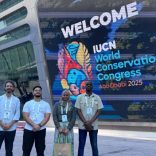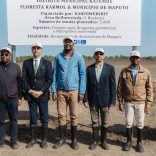Mozambique: Elephant stuck in mud for 2 days saved after 8-hour rescue
Mozambican Conservation Areas get more revenues every year thanks to tourism

Quirimbas National Park (File photo)
Revenue from the National Administration of Conservation Areas (ANAC) in Mozambique is growing between 7 to 10 percent per year thanks to tourism, a source from the institution told Lusa yesterday
“In terms of revenues, we are growing every year, averaging 7 to 10 percent. The most important thing is that prospects are even better,” the ANAC’s Bartolomeu Soto said.
Speaking during a ceremony in Maputo marking the ANAC’s first six years, Soto revelled that the ANAC had raised 87 million meticais (EUR 1.3 million) from tourism in 2016. The amount was boosted by a strategy promoting sports hunting in conservation areas.
Of this amount, eight million meticais (EUR 100,000) was channelled directly into community support strategies, which play a “very important” role in biodiversity conservation in Mozambique.
However, the road ahead is still a long one, Soto pointed out, urging the involvement all stakeholders in the fight against poaching, the institution’s main challenge.
“We expect the private sector to bring in investment, create jobs and participate in conservation,” Soto said, adding that communities should also participate in the opportunities that come from good biodiversity management.
“We have to strengthen our capacity,” he concluded.
The Niassa reserve in northern Mozambique remains one of the areas most affected by poaching, with poverty and the growth of the international ivory market the main causes of the slaughter, particularly of elephant.
Mozambique’s location in the vicinity of countries considered centres of poaching has also contributed to the spread, especially in the south of the country, where poachers cross the border to hunt in neighbouring South Africa’s Kruger Park.
Official figures indicate that Mozambique has lost 48 percent of its elephant population in the past five years and may be banned from international trade in the species’ derivatives because of the lack of clarity in animal management.
The rhinoceros is also under heavy pressure and is almost extinct in Mozambique. The illegal trade extends to Asia, where elephant tusks and rhinoceros horns are used in traditional medicine or to make luxury ornaments.













Leave a Reply
Be the First to Comment!
You must be logged in to post a comment.
You must be logged in to post a comment.